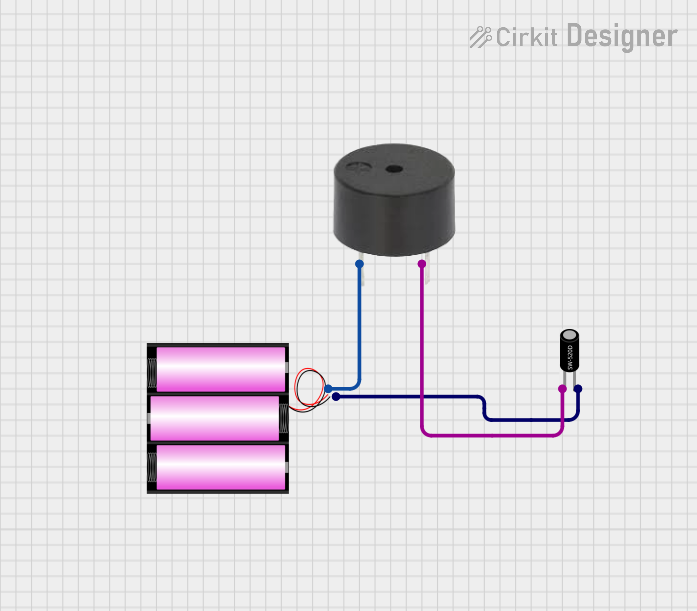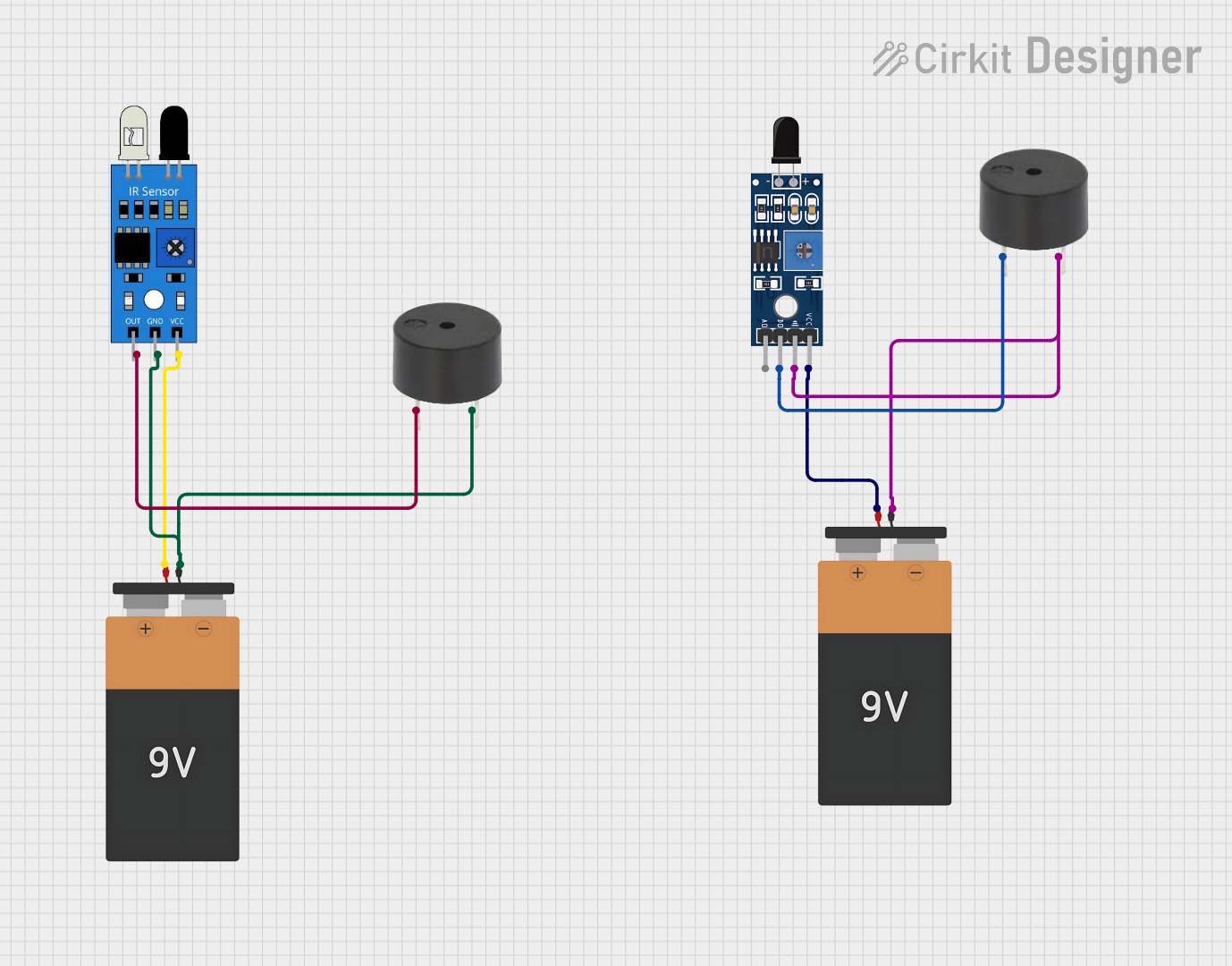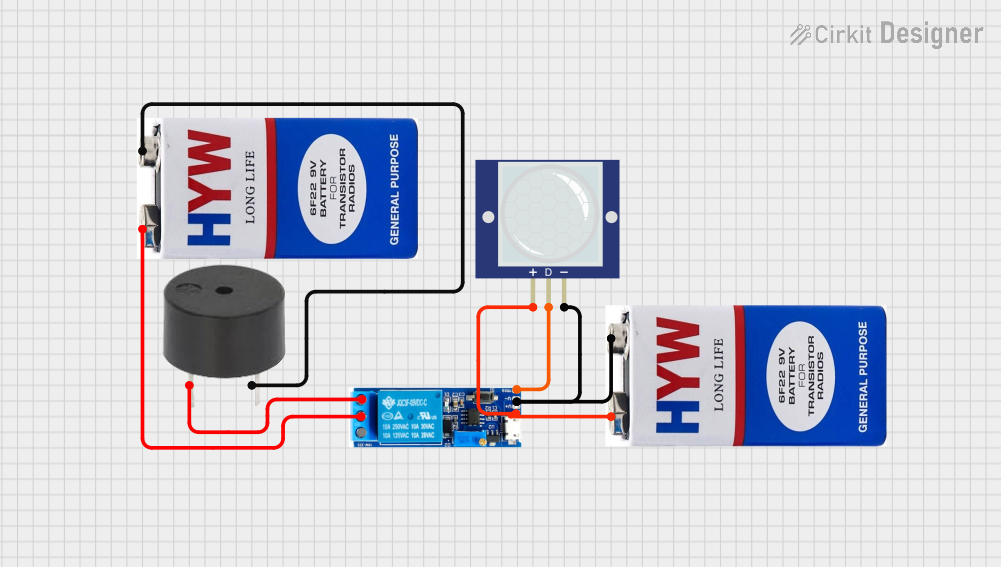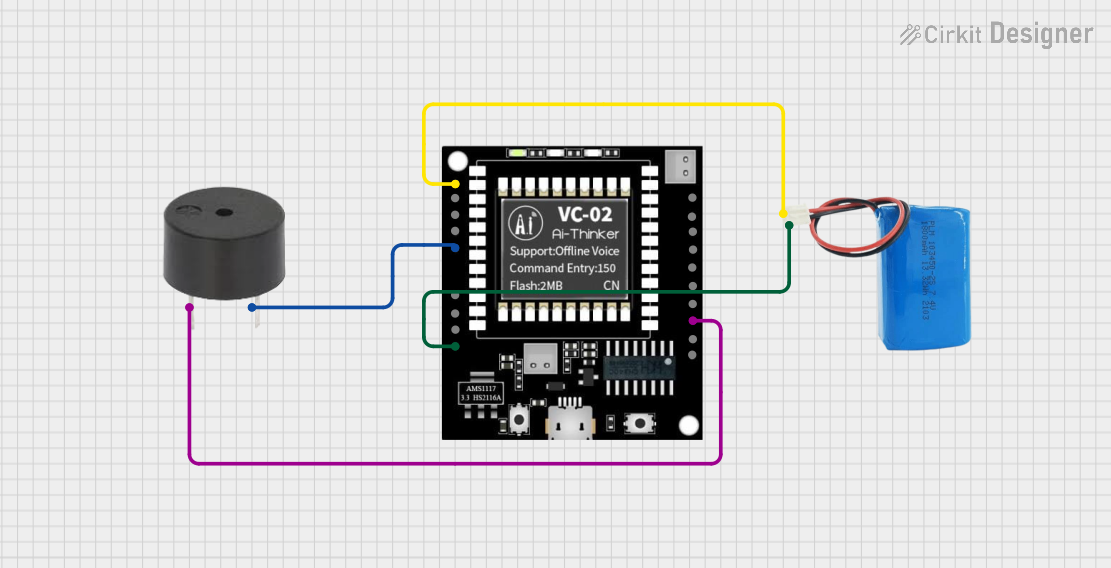
How to Use Signal Tower with buzzer: Examples, Pinouts, and Specs

 Design with Signal Tower with buzzer in Cirkit Designer
Design with Signal Tower with buzzer in Cirkit DesignerIntroduction
The Signal Tower with Buzzer is a versatile visual and audible alerting device that combines a tower light and a buzzer. It is widely used in industrial and commercial settings to indicate machine status, process alarms, or other operational conditions. The device typically features multiple colored LED lights (e.g., red, yellow, green) and a built-in buzzer to provide clear and immediate status feedback.
Explore Projects Built with Signal Tower with buzzer

 Open Project in Cirkit Designer
Open Project in Cirkit Designer
 Open Project in Cirkit Designer
Open Project in Cirkit Designer
 Open Project in Cirkit Designer
Open Project in Cirkit Designer
 Open Project in Cirkit Designer
Open Project in Cirkit DesignerExplore Projects Built with Signal Tower with buzzer

 Open Project in Cirkit Designer
Open Project in Cirkit Designer
 Open Project in Cirkit Designer
Open Project in Cirkit Designer
 Open Project in Cirkit Designer
Open Project in Cirkit Designer
 Open Project in Cirkit Designer
Open Project in Cirkit DesignerCommon Applications and Use Cases
- Industrial Automation: Indicating machine status (e.g., running, idle, fault).
- Safety Systems: Alerting operators to hazardous conditions or emergencies.
- Production Lines: Signaling process stages or completion.
- Commercial Settings: Queue management or customer service notifications.
Technical Specifications
Key Technical Details
| Parameter | Value |
|---|---|
| Operating Voltage | 12V DC / 24V DC / 110-240V AC |
| Power Consumption | Typically 2-5W (varies by model) |
| Light Colors | Red, Yellow, Green (optional Blue) |
| Buzzer Sound Level | 70-90 dB at 1 meter |
| Mounting Options | Pole mount, wall mount, or base mount |
| Operating Temperature | -10°C to 50°C |
| Material | Polycarbonate (lens), ABS (housing) |
| IP Rating | IP54 to IP65 (depending on model) |
Pin Configuration and Descriptions
The Signal Tower with Buzzer typically has multiple wires for connection. Below is a common pinout configuration:
| Wire Color | Function |
|---|---|
| Red | Power Supply (+) |
| Black | Power Supply (-) / Ground |
| Green | Green LED Control |
| Yellow | Yellow LED Control |
| Blue | Red LED Control |
| White | Buzzer Control |
Note: The exact wire colors and functions may vary by manufacturer. Always refer to the datasheet for your specific model.
Usage Instructions
How to Use the Component in a Circuit
- Power Supply: Connect the red wire to the positive terminal of the power supply and the black wire to the ground.
- Control Signals: Use switches, relays, or microcontroller GPIO pins to control the green, yellow, blue, and white wires. Applying voltage to these wires activates the corresponding light or buzzer.
- Mounting: Secure the signal tower using the provided mounting hardware. Ensure it is visible and audible in the intended environment.
Important Considerations and Best Practices
- Voltage Compatibility: Verify the operating voltage of the signal tower matches your power supply.
- Current Limiting: Use appropriate resistors or current-limiting devices if required.
- Environmental Protection: Choose a model with an appropriate IP rating for outdoor or dusty environments.
- Microcontroller Integration: When connecting to a microcontroller (e.g., Arduino UNO), use transistors or relays to handle the higher current requirements of the lights and buzzer.
Example: Connecting to an Arduino UNO
Below is an example of how to connect and control a Signal Tower with Buzzer using an Arduino UNO.
Circuit Diagram
- Connect the red wire to the 5V pin on the Arduino.
- Connect the black wire to the GND pin on the Arduino.
- Use digital pins (e.g., D2, D3, D4, D5) to control the green, yellow, blue, and white wires via NPN transistors.
Arduino Code
// Define pin connections for the Signal Tower
const int greenLED = 2; // Green LED control pin
const int yellowLED = 3; // Yellow LED control pin
const int redLED = 4; // Red LED control pin
const int buzzer = 5; // Buzzer control pin
void setup() {
// Set pins as outputs
pinMode(greenLED, OUTPUT);
pinMode(yellowLED, OUTPUT);
pinMode(redLED, OUTPUT);
pinMode(buzzer, OUTPUT);
}
void loop() {
// Example sequence: Green light ON, then Yellow, then Red, with buzzer
digitalWrite(greenLED, HIGH); // Turn on Green LED
delay(1000); // Wait for 1 second
digitalWrite(greenLED, LOW); // Turn off Green LED
digitalWrite(yellowLED, HIGH); // Turn on Yellow LED
delay(1000); // Wait for 1 second
digitalWrite(yellowLED, LOW); // Turn off Yellow LED
digitalWrite(redLED, HIGH); // Turn on Red LED
digitalWrite(buzzer, HIGH); // Turn on Buzzer
delay(1000); // Wait for 1 second
digitalWrite(redLED, LOW); // Turn off Red LED
digitalWrite(buzzer, LOW); // Turn off Buzzer
}
Note: Use appropriate transistors or relays if the Signal Tower operates at a voltage higher than 5V.
Troubleshooting and FAQs
Common Issues and Solutions
Lights or Buzzer Not Working:
- Check the power supply voltage and connections.
- Verify that the control signals are being applied correctly.
- Inspect for damaged wires or loose connections.
Buzzer Too Quiet:
- Ensure the buzzer is not obstructed.
- Verify the operating voltage matches the buzzer's specifications.
Intermittent Operation:
- Check for loose connections or unstable power supply.
- Ensure the control signals are not being toggled too quickly.
Microcontroller Cannot Drive the Tower:
- Use transistors or relays to handle the higher current and voltage requirements.
FAQs
Can I use the Signal Tower outdoors?
- Yes, but ensure the model has an appropriate IP rating (e.g., IP65) for outdoor use.
Can I control the Signal Tower with a PLC?
- Yes, the Signal Tower is compatible with PLCs. Use the PLC's output relays or transistors to control the lights and buzzer.
What is the maximum distance for wiring?
- This depends on the wire gauge and voltage drop. For long distances, use thicker wires to minimize voltage loss.
Can I replace the buzzer with a quieter one?
- Some models allow buzzer replacement. Check the manufacturer's documentation for compatibility.
By following this documentation, you can effectively integrate and troubleshoot the Signal Tower with Buzzer in your projects.